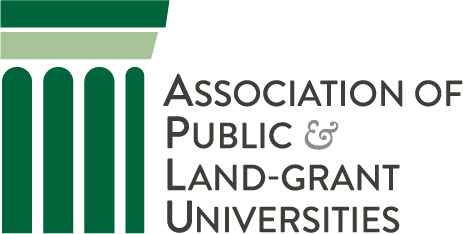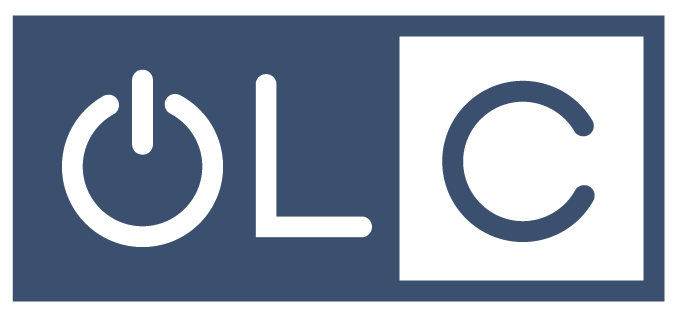Reflection and metacognition can be critical aspects of a personalized and equitable educational experience. When students are asked to look inward and assess how they think and learn, they are empowered to take ownership of their academic progress.
And when faculty reflect on how they design courses and learn about their students, they spot opportunities to create more equitable learning environments supporting the success of every student.
Reflection and metacognition for equitable digital learning was the theme of the third in a series of communities of practice webinars hosted December 10, 2021 by the Association of Public Land-grant Universities (APLU), presented in conjunction with the Every Learner Everywhere network, The Online Learning Consortium and Achieving the Dream. Previous communities of practice events were on Equitizing Your Syllabus and Assessing Students with Care.
Reflection and metacognition: It’s for teachers, too
A major benefit to students of well-designed reflective activities, said Mike Brokos, Program Director of APLU’s Personalized Learning Consortium, is that students actually discover what is helping them to learn. “They come to view assignments more actively as ways to build skills, not just as something required for a grade,” he said. “Reflective assignments also build students’ declarative knowledge or ability to articulate what they’ve learned.”
Meanwhile, reflection helps instructors know how students learned particular skills or concepts. Instructors engaged in reflection and metacognition about their teaching will ask:
- What assumptions do I hold about students?
- To what extent do I have evidence for these assumptions?
- Why do I make the instructional decisions I make?
- What do I know about teaching?
- What would I like to learn?
- What am I confused about?
A “living” syllabus
The webinar featured presentations by several instructors who incorporate metacognitive and reflective components in their courses. While teaching game design, Kristin Ziska Strange, Associate Director of Online Program Development and Instructional Design at Tufts University, used an “annotated syllabus” on a Google document that allows students to post comments and questions.
“At the very beginning, when everything is super overwhelming and they have nine million questions, I really wanted to make sure they were reading the syllabus, and I wanted to create space for them to have conversations around the stuff that we’re studying,” said Ziska Strange. “A lot of my students come in thinking everybody else knows more than they do, so this gives them a chance to see other people [also] asking questions.”
The living syllabus gives students an opportunity to express what particularly excites them about the course. “It also gives me a chance to find out, number one, who knows something about a topic and what topics they are interested in,” Ziska Strange said.
She also devised an innovative way to take her students’ emotional temperature during a course: the GIF check-in.

“I know it sounds really weird,” she said, “but I have them post a GIF to reflect how they feel right now. You get some awesome stuff back. I could tell I had some students who were very confused, others who were overwhelmed with work and posted screaming cats or flaming Elmos. That way I could see, generally, if everyone is middle of the road, or having a good time, or if I need to connect them with resources for support, like tutoring or mental health support.”
Related reading: 4 Alternative Syllabus Formats That Promote Equity
Self-assessment
Ryan Luke, Professor of Mathematics at the University of Louisville, stressed the importance of student and faculty self-assessment. After an exam, he’ll walk them through the problems with students. For example, “What was the question that was missed and why was it incorrect?” Luke explained. “Why doesn’t your answer explain what the correct solution should be? For example, maybe you multiplied the exponents but should have added.”
Luke builds mid-semester feedback into his courses. “It can improve not only student performance but also teaching evaluations,” he said. “What helped you? What hindered your learning? What suggestions do you have to improve the course so that it better supports your learning? This is their opportunity to tell me about my core structure.”
Creating a community
Stephanie Whalen, Professor of English at Harper College, strives to create a classroom community that provides a safe and empowering environment for students. She cited an interview with Black Student Union members who “stressed the importance of addressing the climate of the classroom right away.”
These students spoke of “withholding themselves from being authentically engaged or feeling comfort until they see something that shows that the instructor values multiple perspectives, multiple frames of reference, and diversity.”
Whalen also noted various ways of dealing with challenges to productive discourse. If a student shares an unpopular opinion on a polarizing topic, for example, “invite class members to ask questions to further unpack the statements and opinions with the goal of further understanding the perspective.”
In literature courses especially, instructors might use triggering or offensive language. “You might have taught To Kill A Mockingbird or some other text that has the N word,” Whalen said. “And you know students might bristle. Rather than just skipping over it, use that as an opportunity to talk about the term and explain the social, historical, political connotations; the etymology. We want to increase the understanding of the meaning and why it is charged language.”
Bridging the generation-tech gap
While trying to keep an open dialogue with her students, Heather Michaels, Professor of Chemistry at Indian River State College, encountered a technological disconnect with her students. “I’m a millennial and when I was in school we used email for everything, or, God forbid, even called the instructor,” she said.
But Michaels’ Gen Z students communicate via text and rarely use email. “They’ve complained in my evaluations that I don’t respond to their texts and the only phone number they have for me is my office phone number which is a landline.”
Michaels now uses a mobile messaging app called Remind so she can text students about exams and assignments and ask how they’re feeling. “For whatever reason, they’re okay with checking that daily instead of an email, “ she said. “I think it’s basically the same thing, but, to them, it’s different.”
As Brokos said while introducing the webinar presenters, reflection and metacognition for equity in digital learning is about “facilitating authentic and transparent conversations with students” that foster care and empathy. Text apps and GIF check-ins work for now, but the ongoing work is to think about and address the classroom climate and to find ways to ask students how they learn.
Read more about equitable digital learning in The Caring for Students Playbook




